Vitaly Savelyev: ‘The key for the North–South International Transport Corridor is a unified tariff policy; without it, cargo will not move’
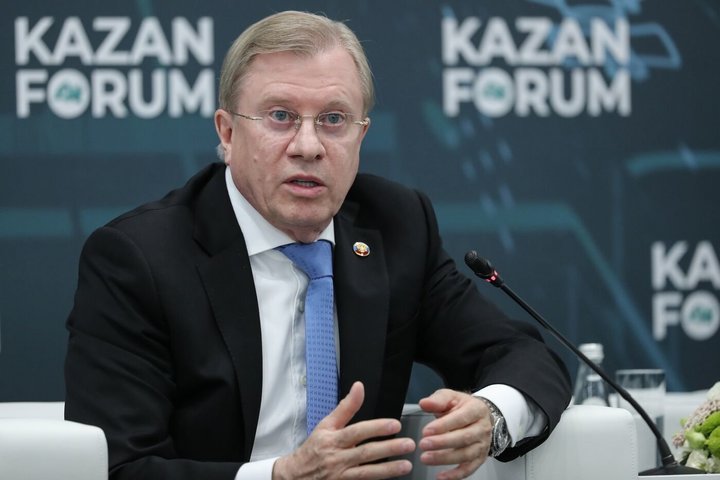
Once the North–South International Transport Corridor reaches full capacity, the route from the port of Ust-Luga in the Leningrad Region to Bandar Abbas in Iran will be cut in half — from 30–45 days to 15–20 days. This was stated by Russian Deputy Prime Minister Vitaly Savelyev on the sidelines of KazanForum. He emphasised that the corridor is gaining strategic importance for Russia’s trade with the countries of South Asia and Africa, via friendly nations in the South Caucasus, the Caspian region, and Central Asia. More details — on how cargo volumes will increase, border crossing times will drop, and when the first train will arrive in Pakistan — can be found in the Realnoe Vremya report.
Route from Ust-Luga to Bandar Abbas will be cut in half
The North–South International Transport Corridor is a major logistics system that includes maritime, rail, and road transport, involving the participation of several countries. “What is each of them doing to improve throughput capacity and unify tariff policy?” this was the direction set for the discussion at the start of the meeting by the moderator, Marianna Ozhereleva, presenter for the RZD-TV channel.
Russian Deputy Prime Minister Vitaly Savelyev was appointed special representative for the development of the North–South International Transport Corridor in November last year. Although work in this direction has been underway since 2000, the project has only taken real shape in recent years. The deputy prime minister spoke about recent achievements and key objectives.

“Indeed, over the past three years we have made significant progress in developing the infrastructure of the North–South International Transport Corridor,” noted Vitaly Savelyev. “Today, it is gaining strategic importance for trade with the countries of South Asia and Africa, through friendly nations in the South Caucasus, the Caspian region, and Central Asia. Once the corridor reaches full capacity, the route from Ust-Luga to Bandar Abbas, by our estimates, will be reduced from 30–45 days to 15–20 days.”
According to him, the plan includes the development of all three routes of the corridor: the Trans-Caspian — using the ports of Russia and Iran, the Western — via Azerbaijan, and the Eastern — through Kazakhstan, Uzbekistan, and Turkmenistan. Russia, Iran, and India agreed to develop the North–South International Transport Corridor back in 2000, and in March of this year, Uzbekistan submitted an application to join the international agreement. Two years ago, a decision was made on a key infrastructure project along the corridor’s Western route — the construction of the 162 km Rasht–Astara railway line on Iranian territory.
“This line will ensure uninterrupted transit flow and the transportation of at least 15 million tonnes of cargo annually. The practical implementation of the project has already begun, and just recently, on 15 May, a ceremonial event was held in Iran’s Gilan Province, where the Iranian government handed over the first land plots for surveying. Russian construction companies will carry out the work,” Savelyev stated.

“What is each country doing to enhance the throughput capacity of the North–South Corridor and to unify tariff policies?” this was the direction set for the discussion by the meeting’s moderator, Marianna Ozhereleva.
An agreement has been reached with Azerbaijan to establish a stable flow of transit cargo along this route: in the first stage — 5 million tonnes, and in the second — 15 million tonnes. It is expected that the throughput capacity of road border checkpoints with Azerbaijan will increase more than sevenfold by 2030 compared to 2021 levels.
On the eastern route, a regular rail container service has been operating since 2022. Representatives of the railways of Russia, Kazakhstan, Turkmenistan, and Iran have introduced unified tariff conditions. On the Trans-Caspian route, the capacity of Russian seaports on the Caspian Sea is set to increase from 19 million to 24 million tonnes by 2030. Two years ago, dredging works were carried out in the Volga–Caspian Sea Shipping Canal, enabling the passage of vessels with a draft of up to 4.5 metres. These works are ongoing.
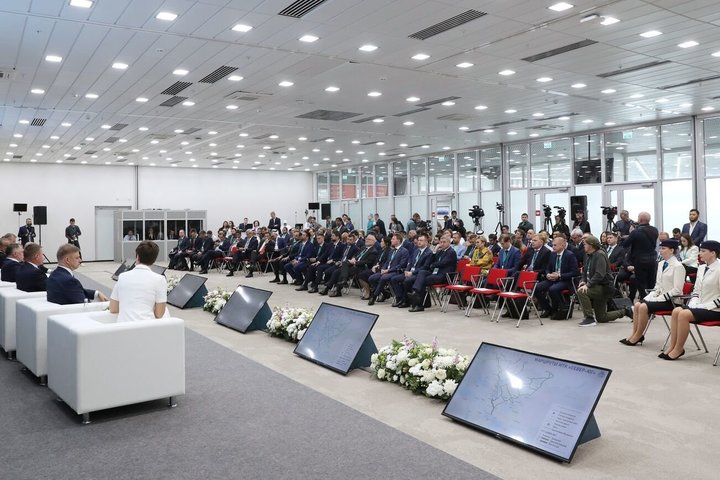
“We expect that, in the future, within the Greater Eurasia region, the North–South International Transport Corridor will be linked with the Trans-Afghan Railway Project — this will make it possible to connect the railway networks of Uzbekistan, Iran, and Turkmenistan, with further access to the infrastructure of South Asia,” said Savelyev. “We have been tasked with increasing freight volumes along the North–South Corridor by at least 1.5 times by 2030 compared to 2021 levels — by enhancing the global competitiveness of the routes.”
“Business does not wait for us to make decisions — it uses the routes that exist”
The topic of transport logistics was continued by Russian Deputy Prime Minister Marat Khusnullin, who spoke about the implementation of the new national project, “Infrastructure for Life.” A six-year road construction plan has been prepared, taking into account all international transport corridors, he emphasised: “We have integrated the North–South Corridor, federal, regional, and municipal roads into one large programme. The task is to maximise their throughput capacity and the speed of passenger and freight movement.”
All roads leading to border checkpoints will be brought up to regulatory standards. Since Russia has historically maintained its road network with the countries of the former Soviet Union, the task is to synchronise and equalise throughput capacity. Moreover, work is underway on other international transport corridors as well, such as the Europe–Western China route: spanning 12,000 km of roads from the South China Sea to Saint Petersburg, which already sees full traffic flow. Last year, volumes of cargo delivered by road from China increased by 70%.
Part of the North–South Corridor passes through Central Asia, where all countries are highly interested in minimising transit times and maximising vehicle load capacity. Therefore, Russia and its counterparts in Central Asia will need to synchronise road operations, including in transit countries en route to the Persian Gulf, namely Iran, emphasised Marat Khusnullin:
“We consider the prospect of connecting to Pakistan through Afghanistan and Iran very promising. For example, just yesterday we held a meeting with colleagues from Afghanistan. Perhaps not everyone knows, but over the past two years, all vehicles have been moving freely and without obstacles from Afghanistan to Pakistan. In other words, business does not wait for our decisions — it uses the roads that exist, operates under the conditions available, transports its cargo, and generates income. Therefore, our task is to create the most comfortable conditions possible.”
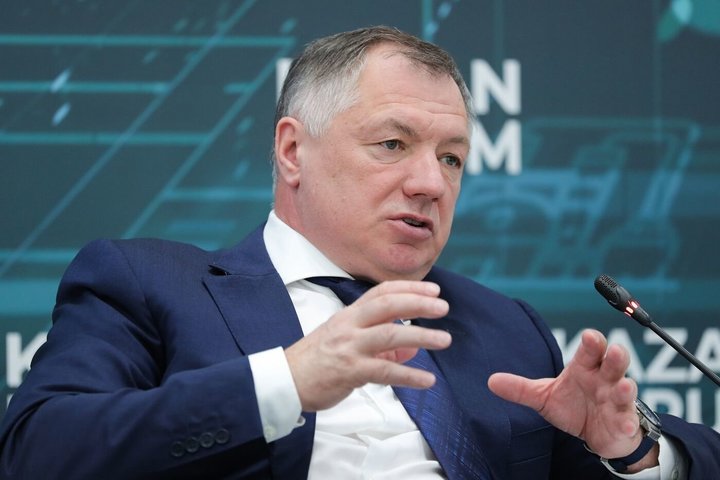
Border with Azerbaijan will be able to handle up to 861,000 heavy trucks a year
It is important to implement “seamless logistics” regarding border checkpoints, customs documents, and a unified information system, the deputy prime minister noted. “The goal has been set for transport processing time at checkpoints to meet international standards — 10 minutes per vehicle inspection. It is a challenging task, but colleagues from the Ministry of Transport are working on it,” Khusnullin added.
In confirmation, Russian Transport Minister Roman Starovoyt cited some results of this work. In particular, over the past four years, the throughput capacity at border checkpoints with Azerbaijan has increased fivefold — from 400 to 1,900 heavy trucks. At the border with Georgia, it has more than doubled: instead of 700 vehicles, approximately 1,500 now pass through.
Furthermore, at the Yarag-Kazmalyar road border crossing on the Russia-Azerbaijan border, plans are underway to increase capacity to 861,000 vehicles per year, compared to just 73,000 vehicles in 2023.
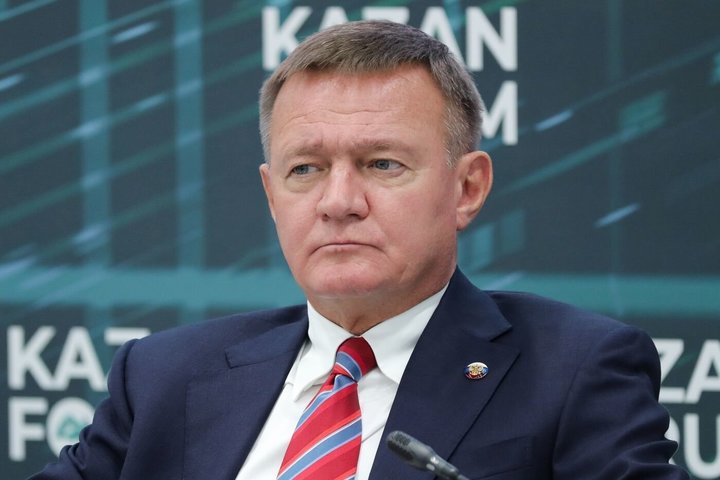
Governor of Astrakhan Region Igor Babushkin spoke about the increase in freight volumes along the Trans-Caspian section of the North-South corridor. The majority of goods on this route pass through Astrakhan: out of 8 million tonnes transported along this branch of the corridor, 6 million tonnes are accounted for by the region — a level not seen in the past 10 years. “We are seeing an increase in the number of ship calls — 14,000 tonnes expected in 2024, of which 1,500 tonnes will be foreign vessels. About 95% of the cargo moves towards Iran and back,” the speaker noted.
Two seaports in the region — Astrakhan and Olya — are operating at full capacity, together able to handle cargo volumes of up to 16 million tonnes. Meanwhile, modernisation efforts continue. The port of Olya plays a strategic role, having already achieved record cargo handling figures in 2024. It is currently home to Russia’s only special economic port zone, where three resident companies are engaged in constructing a large container terminal, as well as grain and refrigeration terminals.
“Further development of maritime cargo transportation will certainly require fleet renewal,” noted Babushkin. “We are discussing this with the government, which is making the necessary decisions. Currently, several projects by Russian and Iranian shipping companies are underway at Astrakhan shipyards, including the construction of container dry cargo vessels intended specifically for use in the Caspian Sea basin.”
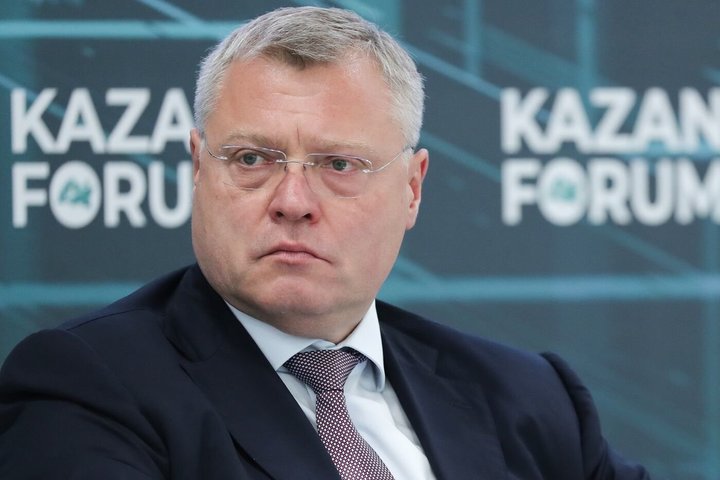
Up to 50% discount on rail transportation via the North-South Transport Corridor
About 87% of cargo turnover in Russia is accounted for by the railway, reminded the CEO and Chairman of the Management Board of JSC Russian Railways, Oleg Belozyorov. Last year, out of 1.2 billion tons of cargo by rail transport, 529 million tonnes were for international traffic — this includes export, import, and transit.
“The volumes of transportation are growing dynamically, primarily with friendly countries. If in 2019 these countries received 161 million tonnes of cargo, now it is 361 million tonnes of exports in 2024, with the share approaching 90%. This indicates that the vector and direction of cargo transportation are changing, and the North-South corridor is precisely one of the main directions where flows are being transformed,” emphasised the head of Russian Railways.
The development of the corridor involves Kazakhstan, Turkmenistan, Iran, Azerbaijan, and other countries, which are joining not only through rail but also road transportation. In this regard, one of the key issues comes to the fore — tariff decisions. “We have agreed to reduce tariffs. Traditionally, corridors are rolled out with tariff reductions in order to develop the main algorithms. Discounts will be around 50%. Moreover, these are through agreements," Belozyorov stated.
Container transportation is acquiring significant importance; last year Russian Railways set a record — more than 7.8 million containers were transported within the country. There is also growth on the international route: in the first four months of 2025, cargo passing through the Turkmen-Iranian railway checkpoints increased more than 2.4 times — amounting to 1,344 containers. Growth is also expected on the western branch, through Azerbaijan, once the line via Astara is launched.
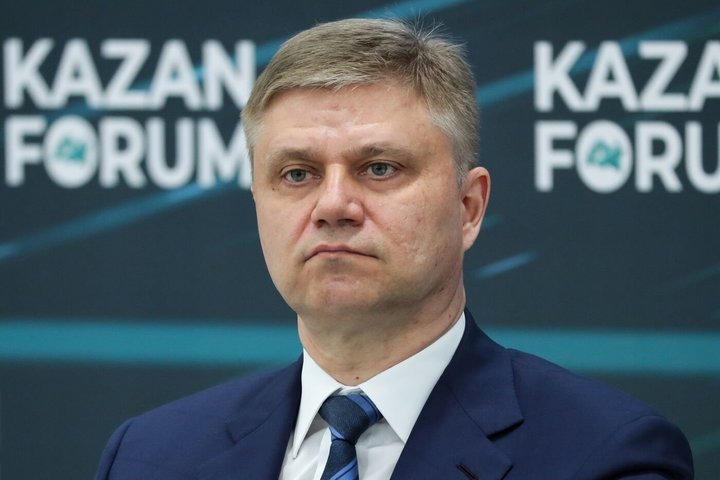
“Russia’s time has come to look to the left”
The North-South corridor can fundamentally change the situation not only for its region but for a much larger part of the world, is the conviction of Abdula Alim Khan, Minister for Privatisation, Investment, and Communications of the Islamic Republic of Pakistan. His country is ready to offer the shortest route to a number of Central Asian states. Even if cargo needs to be sent from the Persian Gulf countries to China, the shortest route will pass through Pakistan, he stated.
“Imagine how much benefit and profit we will gain by connecting the routes. When such links appear, you will see growth in prosperity not only for the budgets of the countries but also for industry, business, and trade. This will truly have a positive impact on the prosperity of all the states in the region,” he added. “Last year I joked: if previously Russia only looked to the right, towards Europe, now Russia’s time has come to look to the left, towards the Asian countries and Pakistan.”
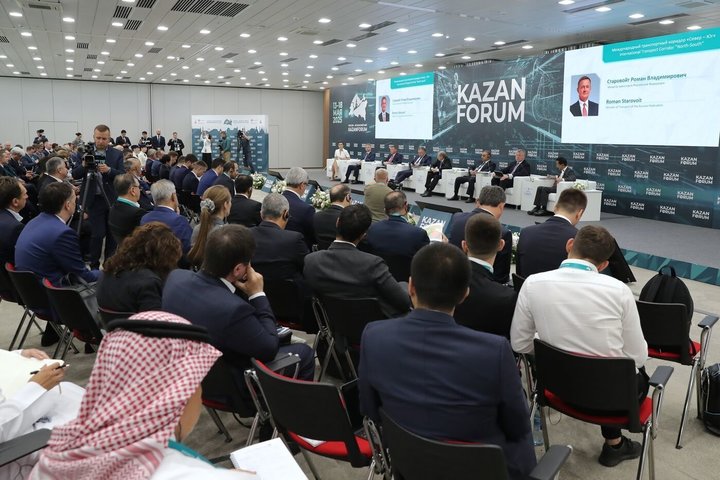
“The key for us is a unified tariff policy; without it, cargo will not move. We can build whatever we want, but if the tariff policy is not accepted by business, cargo will not be able to travel along these routes,” Vitaly Savelyev concluded the discussion and added. “We need to understand what we will carry back. We raised this question regarding imports. It is a key issue for us, for everyone.”
The first train to Pakistan under the route, he said, is expected to arrive in June. In any case, the latest results of the North-South Transport Corridor’s work look promising. About 24 million tonnes of cargo transported last year speak for themselves.
Tatarstan
